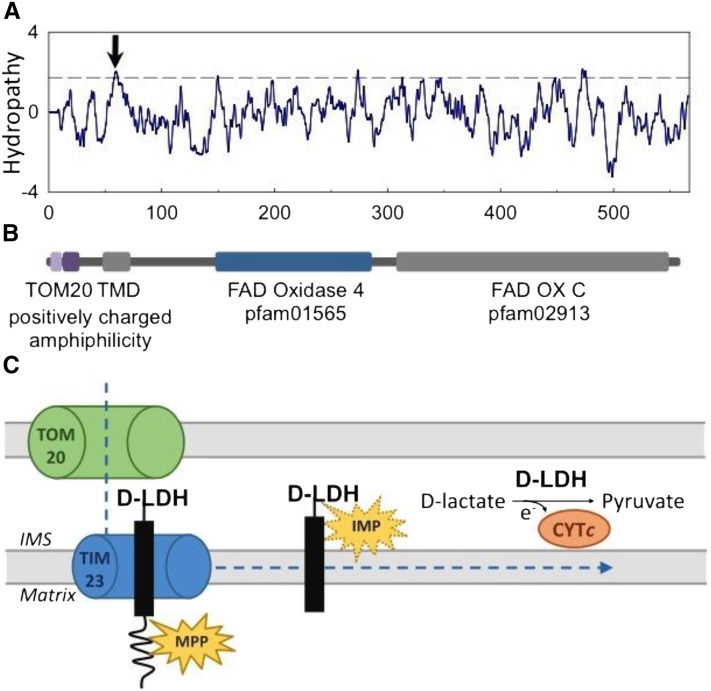Figure 7.
A, Hydropathy plot of the 567-amino acid-long sequence of d-LDH. Window size was nine amino acids; the dashed line indicates the threshold for possible transmembrane domains (TMD). The hydropathy plot supports the predicted transmembrane domain between amino acids 48 and 68 predicted by TMpred (arrow). B, Structural and functional domain features of d-LDH. C, Predicted stop-transfer mechanism of mitochondrial d-LDH import and its mode of action. In the model, d-LDH is recognized via TOM20 and guided through the OMM into the IMS. The mitochondrial processing peptidase (MPP) cleaves the positively charged amphiphilic region to yield a membrane-anchored IMS protein. d-LDH may be further processed by an IMS protease (IMP) to be released as a soluble IMS protein. In both scenarios, d-LDH converts d-lactate to pyruvate, passing electrons to CYTc.

